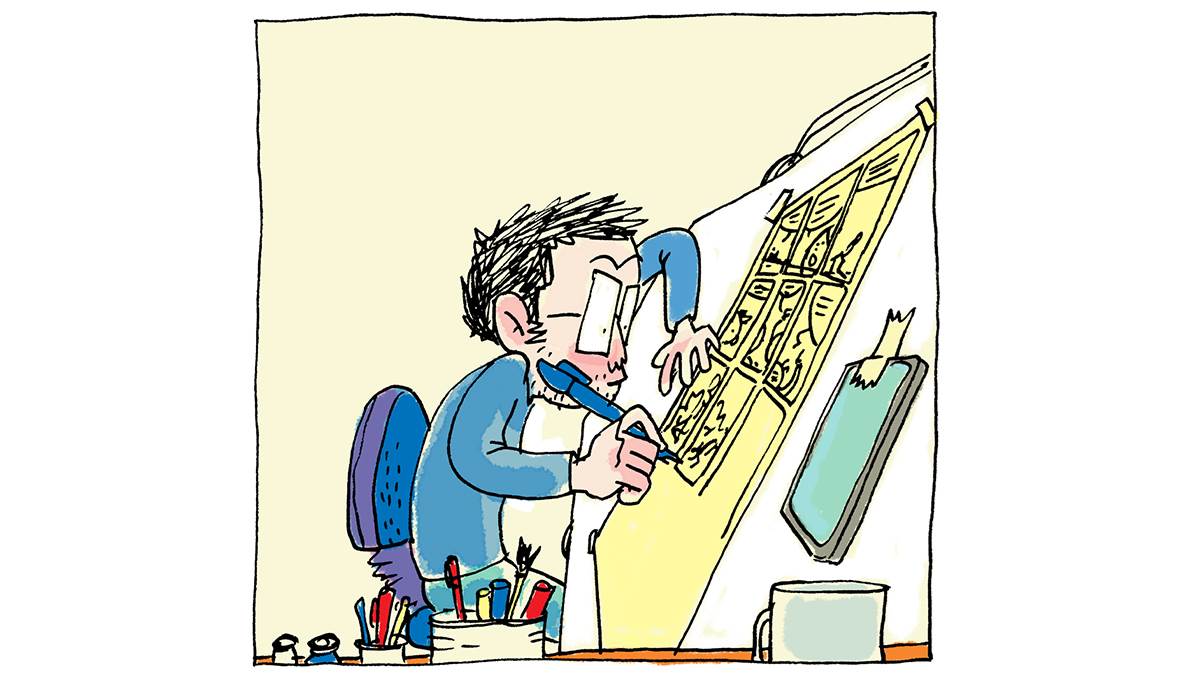How comics are made: from the author of Lost Tales
Published on: 09 January 2017 Author: Adam Murphy
Budding authors and illustrators, take note: Adam Murphy has given us an inside look into how his brilliant comic, Lost Tales, was made and published.

Each Lost Tales story originally appears in The Phoenix, the weekly story comics magazine. Only once enough stories were published in the magazine, were they collected in the Lost Tales book.
While it has my name on the cover, it's really a team effort between my wife Lisa and myself - we work as a team. I write and draw the stories, but Lisa's involvement is invaluable at each stage, not just as a talented colourist, but also as story consultant, cheerleader, sanity-checker and all-round muse.
1. Finding a story
The first thing is to search for a truly awesome folktale that will become a Lost Tale. We have lots (lots!) of folktale books, but the internet is also good for finding old and out-of-print books.
Also, if we find a good one, I like to search to see if there are other versions to compare it with. Some folktale books leave out the gross or scary bits, so I always try to put those back in!

2. Telling the tale
Once we have a good candidate, I'll tell it to Lisa. Her first reactions are very helpful in knowing how the story works. Sometimes I'll have to shape the story a bit to make it work as a comic - explaining some bits, cutting out other bits, adding jokes or choosing between different versions.

3. Scripting
This is the hardest bit! I script the comic using Post-its: each Post-it is one panel in the final comic. I also scribble in little messy drawings so I can 'read' how the pictures will work as well.
Doing it with Post-its means I can easily add, replace or move them around as the story takes shape. I usually go through about two packs per story!

4. Editorial feedback
Once we both agree that the story is a decent shape, I send it off to The Phoenix, which is a good time for a nice cup of tea!
The whole editorial team have a look and send back their suggestions. Sometimes it's just a few words to change, sometimes it's a whole big chunk of the story that needs to be re-done, but it always helps to make the end comic better.

5. Visual research
One of the things that's very important to me is setting each tale in a particular time and place. I'll do a lot of research - practising drawing the people, costumes, landscape, architecture and so on, to try and give it a real feeling of the setting.

6. Drawing
At last, I can get on and draw the comic! This is usually the easiest bit - I can just put on some music (or an educational podcast) and get on with it.
The phone taped to the drawing table is in case I want to look up what a costume or tree or whatever looks like while I'm drawing.

7. Colouring
I'm very lucky to have Lisa help colour the comic. A little girl we met once called her a 'professional colour-in-the-lines person'.
But what she does is much more than just colouring neatly. She chooses colours that help tell the story, bring the setting to life, and sing together to make the comic beautiful!

8. Enjoy!
Once the colours are done, the comic can be sent to The Phoenix to put in the magazine or into the Lost Tales book - so we can sit back and enjoy reading the stories as a family.





